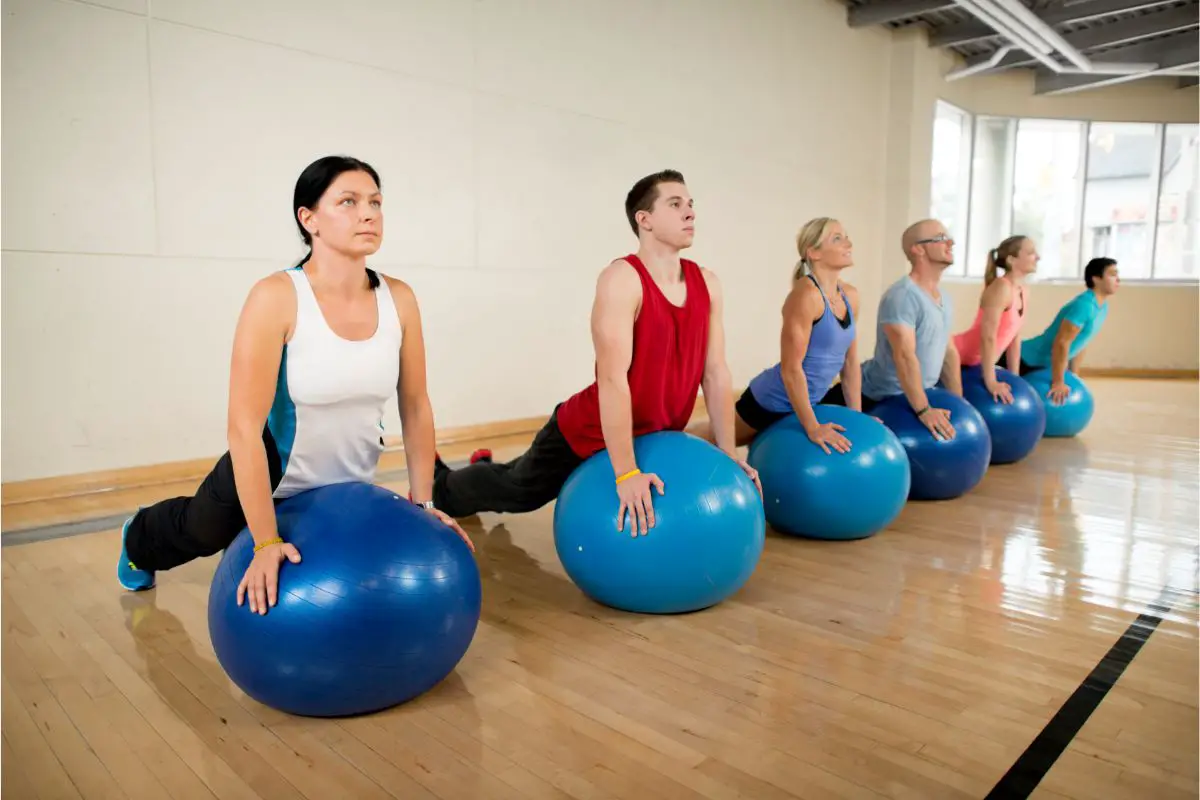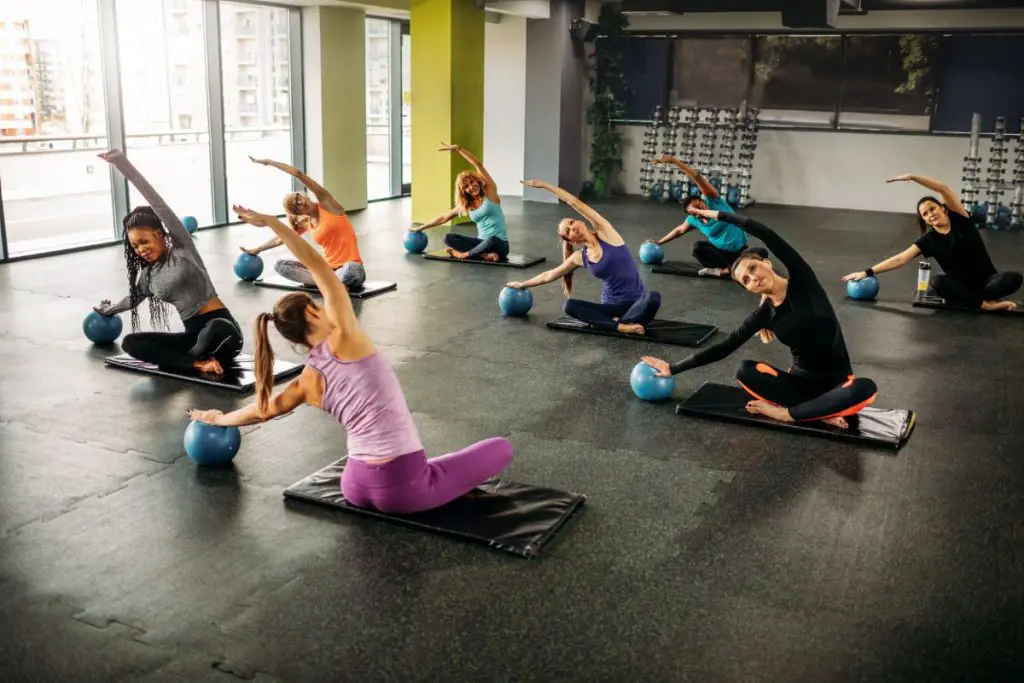How Many Calories Do You Burn In A Pilates Class? (The Answer Might Surprise You)
Regular Pilates exercise can help you to increase your flexibility and improve your posture. All you need is a mat and you can practice Pilates anywhere and anytime, without any equipment.
While burning calories may not be the prime reason people join Pilates classes, people on a weight loss journey may be interested in the number of calories that can actually be burned in Pilates.
However, unless you are performing pilates in a controlled environment, measuring the number of calories you burn can be a very inexact science.
Therefore, this article aims to help you understand the influencing factors that impact calories burned, how to estimate this and Pilates exercises that will maximize your calorie loss.
How Many Calories Does Pilates Burn?
Firstly, a calorie is measured as a unit of heat or energy. Your body transforms calories found in stored nutrition (fat) and food into energy through a thermal metabolic process that releases heat; thus, we have the expression “burning calories.”
Although, for your body to function properly and stay alive; it needs a specific amount of calories.
This is known as your basal metabolic rate (BMR). Each BMR is specific and can be steeped by your body composition (for instance, muscle to fat ratio), sex, weight, and age.
Below, you will find the average calorie loss on mat Pilates at a beginner level for one hour, shown in weight:
- 120-pound person – 171 calories per hour
- 130-pound person – 186 calories per hour
- 150-pound person – 200 calories per hour
- 180-pound person – 257 calories per hour
However, you should keep in mind that the number of calories burned will be larger for those undertaking advanced or intermediate Pilates sessions.
Using A Calorie Counter For Pilates
As we have previously mentioned, there is a range of different variables that can influence the number of calories burned during a Pilates workout; therefore, measuring the exact calories burned can be difficult.
When you take into account the range of intensity levels in Pilates, as well as the intensity related to whether or not equipment is involved, and then determining what equipment is at what resistance level; overall, it’s extremely difficult to identify the specific calories burned during Pilates that is applicable for everyone.
However, having said that, it’s a lot easier to calculate and estimate your specific calories burned through an activity calculator.
Just remember that, typically, calorie calculators found online only require the duration of your exercise and your weight.
They don’t inform you about what population their baseline is acquired from (for instance, level of fitness, sex, weight, etc.).
Additionally, they don’t specify why Pilates level is performed, including beginner versus advanced, or mat exercises versus equipment exercises.
Therefore, you should regard these numbers as extremely general.
Likewise, if you’re “guesstimating”, you should keep in mind that men typically burn more calories than women when performing the same exercises.
Furthermore, keep in mind that if you’re in better shape, you’ll generally have a higher BMR; although, burn fewer calories.
How To Estimate Calories Burned During Pilates
For a more accurate measurement of the number of calories burned, you’ll need to regard the measurement from your specific body.

Below, you will find three strategies to estimate your calories burned more effectively.
Rating Of Perceived Exertion
Instead of using a heart rate monitor to track your exertion levels, you can simply use the rating of perceived exertion scale (RPE).
This uses a subjective experience of fatigue, sweat, and breathing rate measured on a scale of 6 (no exertion) to 20 (the highest exertion) to help you determine your level of exertion.
During a workout, you should be aware of your RPE. When performing easy exercises, your RPE should be approximately 11 or 12.
On the other hand, during harder workouts, or high-intensity interval training, your RPE may be closer to 18 or 19.
Throughout your Pilates workout, keep in mind your RPE levels to see how many calories you’re burning and how hard you’re working.
Heart Rate Monitor
The most popular way of measuring calorie loss is through a heart rate monitor.
Due to the body’s requirement for oxygen to burn calories, with the heart pumping oxygen throughout the body, there is a clear correlation between a stronger heart rate and the body’s need for oxygen with which to burn calories.
You will find that some heart rate monitors provide a projection of calories burned based on your average heart rate and BMR during an exercise session.
Some even provide input for personal data such as sex and weight for a more accurate measurement.
Heart Rate Calculators
To help determine the number of calories burned you can also use a heart rate-based calculator, these can also be found online, as well!
Technology is improving every day; therefore, activity monitors should be able to measure calories burned during a Pilates exercise more accurately – however, they are not able to monitor multiple planes of movement activities.
Pilates For Weight Loss
If your main goal is to lose weight when performing Pilates exercises, then you should keep in mind that you need to burn 3500 calories more than you receive to burn one pound of body fat.
This can be achieved over time by reducing your calorie intake and increasing the calories you burn during exercise.
When looking at calorie burning and Pilates, Pilates is a type of moderate strength training; therefore, it can definitely help you to lose weight and burn calories while doing so.
There is a range of different Pilates exercises – from equipment such as the Pilates reformer to no equipment at all – and certain movements help to burn more calories.
To burn more calories; below, are a few favorite Pilates exercises:
The Hundred
Position yourself on the floor with your arms at your side and your legs extended.
Then, either extend your legs to a 45-degree angle or lift your legs to a tabletop position.
Hover your arms above the mat, reaching your fingertips forward, curling your neck, shoulder blades, and head off the mat.
Pump our arms at your sides, inhaling for 5 and exhaling for 5 pumps. Hold for approximately 100 pumps or around 10 breaths.
Swimming
This exercise works your core, arms, and legs. Position yourself on your stomach, with your arms outstretched and your body in a straight line.
Begin lifting your arms and knees from the ground, and start to move your arms and flutter kick your legs in unison- as if you’re swimming!
Plank Jacks
Start in a plank pose, with your wrists positioned under your shoulders. Keep your palms on the ground and start to jump your feet. Then finish by returning to the starting position.
Final Thoughts
Pilates is a great exercise for those looking to lose weight and burn calories.
However, the number of calories burned is entirely dependent on your body composition, with different factors influencing your calories burned.
Hopefully, this guide has informed you on how many calories are burned during a Pilates session.






